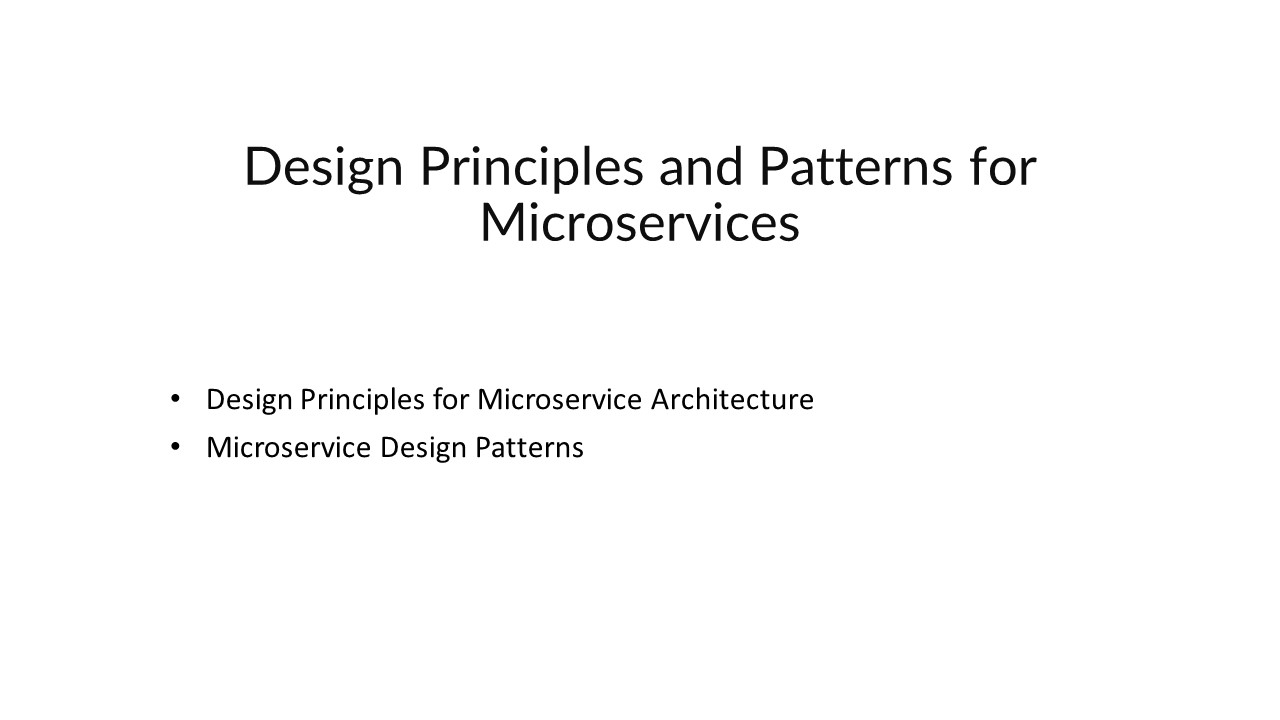Microservice Design Pattern and Priniciples PowerPoint PPT Presentation
Title: Microservice Design Pattern and Priniciples
1
Design Principles and Patterns for Microservices
- Design Principles for Microservice Architecture
- Microservice Design Patterns
2
Microservices
- Microservices, also referred to as microservice
architecture is an architectural design that
allows an application to be structured as a
collection of smaller, self-contained services
that are built around a business domain. Each
service of microservice Architecture is
self-contained and can implement only one
specific business capability.
3
Design Principles for Microservice Architecture
- The following are the design principles for
Microservices - Services that are self-contained and autonomous
- Scalability
- Load Balancing in Real-Time
- Auto-Provisioning
- Decentralization
- Resilient Services
- Availability
- DevOps integration ensures continuous delivery.
- Continuous Monitoring and Seamless API
Integration - Isolation from Setbacks
4
Microservice Design Patterns
- Aggregator Pattern In the world of computing
Aggregators is a program or website that stores
and displays relevant elements of data. This is
why Microservices patterns Aggregator is a basic
website that calls different services to get the
information required or to achieve the desired
function. The source of output is split into a
monolithic system broken down into microservices
this approach is beneficial when combing data
from various services. Both services have their
own databases, and an aggregator with a unique
transaction ID will take data from each
microservice, use business logic, and finally
publish it to an endpoint to rest.
5
- Asynchronous Messaging Each of the services
within this kind of Microservices Design Pattern
is able to communicate with one another however
they don't need to talk in a sequential
manner. Therefore, look at three of the services
which are Service A, B as well as Service C. A
client's request may be sent directly via
Services C or Service B simultaneously. They will
route the request to the queue. Apart from that,
the request may be directed to Service A and the
reply is not required to be given to the same
company that the request was made.
6
- API Gateway API gateways have the capability of
changing protocol requests between different
types. Similarly, it can offload the
microservice's authentication/authorization
responsibilities. API Gateway also serves as a
gateway to all microservices and creates specific
APIs that are suited to various kinds of clients.
Microservices utilize Service Discovery as a
guide to decide on the best route to communicate
with each other. Microservices communicate with
each other through the use of a stateless server
like an HTTP request/message bus.
7
- Event Sourcing This design style creates events
when the state of the application is
changed. Furthermore, the events are stored in a
series of events, which helps developers in
determining what changes were made at the
time. This means that it is possible to modify
the state of your application to reflect previous
changes. Changes in the state of your application
will be seen on the display layer after the
events have been published.
8
- Command Query Responsibility Segregator The
database-per-service model, or the shared model
of a database for each service employed in all
microservices designs. But, since access to data
is restricted to one database in the model of a
database per service and we cannot implement
queries. In this scenario Command, segregator
pattern Query Responsibility can be
utilized. This application is split into two
components based on this pattern which are
Command and the Query. The command component will
manage any request (such as create deletion,
create, and delete) and the query portion will
manage materialized views.
9
- Shared Data or Database The Microservice API is
able to access databases or shared data for each
service. This means that each microservice will
be assigned its own unique database ID which
blocks other applications in the system from
accessing the database. In addition, you can also
select shared databases to connect more than one
microservice's database to address the problem of
denormalization. This can help with data
collection for monolithic apps which have been
split into microservices. But, databases must be
limited to 3 microservices. Otherwise, scaling
these services is difficult.

